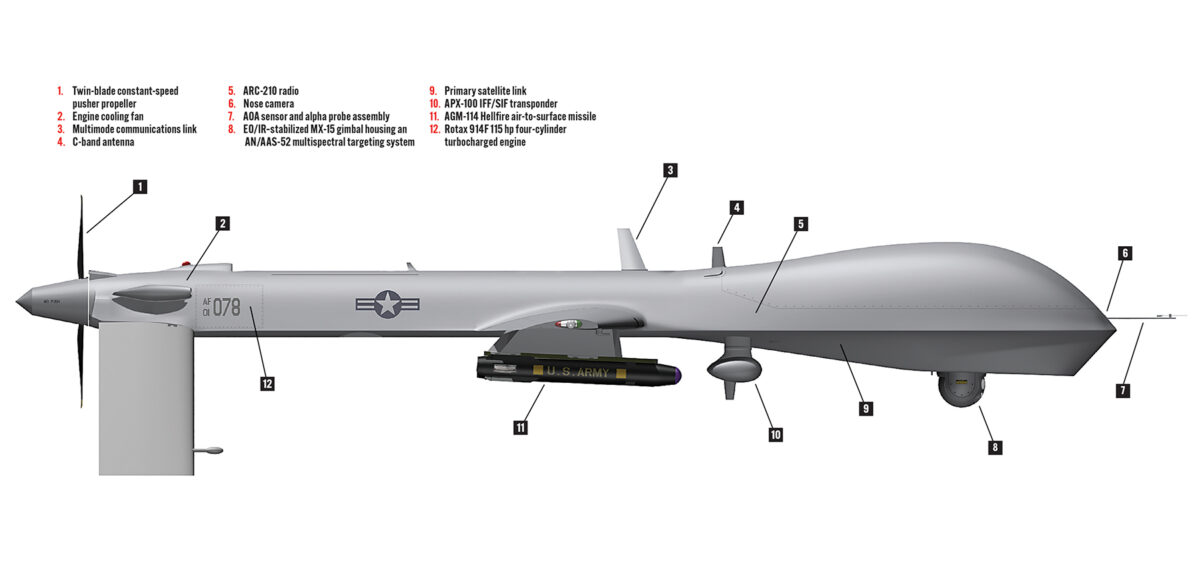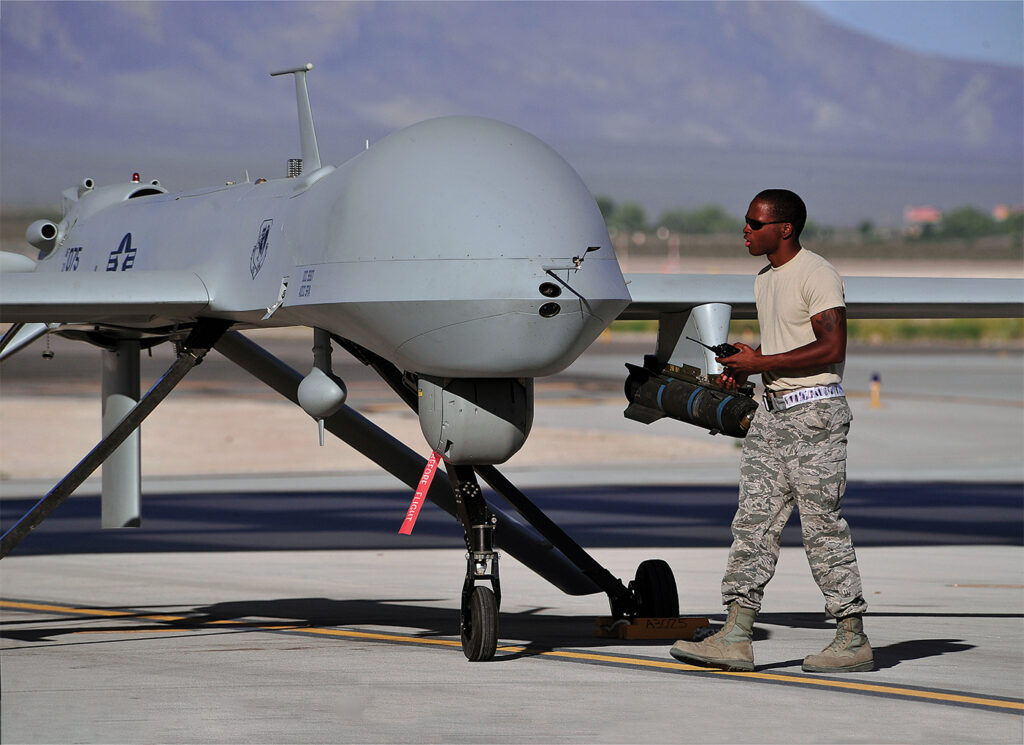Even in the Headline-Grabbing World of Drones, the Predator Stands Out

Specifications
Height: 6 feet 11 inches
Wingspan: 55 feet 2 inches
Empty weight: 1,130 pounds Maximum takeoff weight: 2,250 pounds
Power plant: Rotax 914F 115 hp four-cylinder turbocharged engine driving a twin-blade constant-speed pusher propeller
Fuel capacity: 665 pounds
Cruising speed: 80–100 mph Maximum speed: 135 mph
Range: 770 miles
Ceiling: 25,000 feet
Armament:
Two AGM-114 Hellfire air-to-surface missiles; or four AIM-92 Stinger
air-to-air missiles; or six AGM-176 Griffin air-to-surface missiles
Military use of remotely piloted aircraft, or drones, dates to World War I experiments with practice targets, and guided aerial weapons were operational by World War II. But it took advances in electronics and satellite technology to realize unmanned aerial vehicles (UAVs) capable of being controlled from thousands of miles away. The first operational reconnaissance drone, the Predator, went on to assume a more aggressive role.
Its inventor, engineer Abraham Karem, is an Assyrian Jew born in Baghdad—ironic, considering how much his invention would serve in Iraq. Karem’s family moved to Israel in 1951, and he built his first UAV for the Israeli Air Force during the 1973 Yom Kippur War. Immigrating to the United States, he soon drew the attention of the CIA. Karem developed a series of prototypes, the Amber and Gnat 750, for General Atomics before test flying his ultimate design on July 3, 1994. A year later it entered service with the CIA and the U.S. Air Force as the RQ-1 (recon drone) Predator.
Coinciding with the terrorist attacks of Sept. 11, 2001, the U.S. Department of Defense was developing an operational drone capable of toting ordnance. The RQ-1 proved adaptable to carrying an AGM-114 Hellfire air-to-surface antitank missile under each wing. Accepted in 2002 and promptly deployed to Afghanistan and Iraq, the armed Predator was designated the MQ-1 (multirole drone). On Dec. 23, 2002, over the no-fly zone in Iraq, an Iraqi Mikoyan-Gurevich MiG-25 engaged an MQ-1 armed with AIM-92 Stinger air-to-air missiles and shot it down, winning the first encounter between a conventional warplane and a UAV.
In 2011 the 268th and last MQ-1 left the General Atomics plant. By then it had accumulated more than 1 million flight hours and truly earned its Predator moniker. On March 9, 2018, the Air Force retired the MQ-1, which had been supplanted by General Atomics’ improved MQ-9 Reaper.

This story appeared in the Spring 2024 issue of Military History magazine.


No comments:
Post a Comment